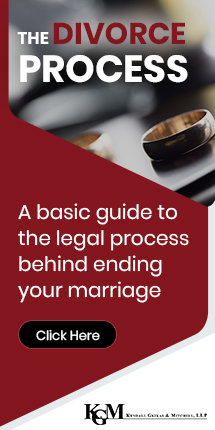 When you’re in the midst of divorce, there are so many practical variables to consider. During the emotional rollercoaster of a divorce, it’s easy to forget about one important aspect that will need to be agree upon in the divorce terms: retirement benefits. Come set up an appointment at Kendall Gkikas & Mitchell to discuss the specifics of your and your soon to be ex-spouse’s particular situation, but here are some helpful pointers to get you started. Here’s the number: 909-482-1422 and email address: info@parents4children.com.
When you’re in the midst of divorce, there are so many practical variables to consider. During the emotional rollercoaster of a divorce, it’s easy to forget about one important aspect that will need to be agree upon in the divorce terms: retirement benefits. Come set up an appointment at Kendall Gkikas & Mitchell to discuss the specifics of your and your soon to be ex-spouse’s particular situation, but here are some helpful pointers to get you started. Here’s the number: 909-482-1422 and email address: info@parents4children.com.
Talk to Retirement Plan Providers
Many 401K, 403(b), and other retirement plans have policies already in place that dictate what happens to the retirement funds during a divorce. The company likely has a rule about whether retirement benefits are paid right away or when the fund owner reaches a certain age, usually 65. Some plans divide funds by percentage and others divide them by shares. Researching your different options and talking with your plan administrator will set you up perfectly to begin discussing fair division of retirement benefits.
Make the Hard Choices
You and your ex-spouse will have to come to an agreement on how to split your assets evenly, including retirement benefits. Once you know your retirement plan policies, there are four most common options for splitting the funds.
- Calculate and Take the Plunge
- Divide and Conquer
- Dollah Bills Ya’ll
- Rollin’, Rollin’, Rollin’…
This option is often considered the most simple—you keep all of your retirement funds and your spouse takes other assets of equal value. For this option to be a fair division, you’ll need to make some definitive calculations. How much is the retirement plan worth now, and how much will it likely be worth in the future? How much tax will be charged on your retirement over the long term? These two questions will need to be answered in detail to determine what asset your ex-spouse should get for it to be a fair deal.
Splitting your 401K or other retirement account with your partner is another option. You’ll have to get a Qualified Domestic Relations Order (QDRO). QDROs stipulate that you will continue to contribute to the plan and manage its investment choices, while the spouse could make investment choices for his or her half without contributing to its funds. This QDRO will have to conform to retirement plan administrators’ policies or it will be rejected, which could delay divorce procedures for months or even years and additional fees.
Another possibility is to liquidate the portion of your account that’s needed to satisfy the QDRO and give your spouse a lump sum. There are some complex legal requirements to be able to do this option, and there are some intense tax consequences, so this is likely the least financially sound option. Divorce terms will need to specify which spouse is responsible for paying the taxes on the payout, and usually the recipient will be liable to these fees.
Roll the portion of funds awarded to the ex-spouse into an IRA. This option is only available to you if you’ve left the company the retirement plan is tied to or you’re older than 59.5. The advantage to this option is that a rollover permits you to remove your ex’s share of funds from the retirement plan without incurring penalties or tax liability. Your ex can also choose from a greater variety of investment choices.
Closing
There are so many financial factors to consider during a divorce, but at Kendall Gkikas & Mitchell we’ve helped thousands of people through what can be a complicated process. Rest assured that you’ll always be able to count on our attorneys to be on your side and give you sound legal advice. Call 909-482-1422 or email info@parents4children.com to set up an appointment today.


